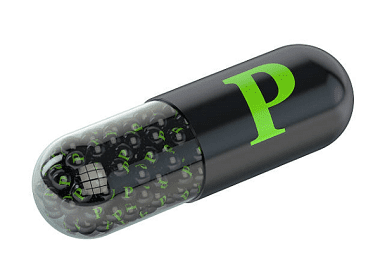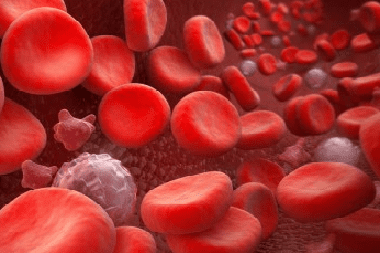Endocrinology >>>> Hyperphosphatemia
Hyperphosphatemia.

Phosphates (substances that have phosphorus atoms in their structure) perform important functions in cellular metabolic processes:
- They are, along with calcium, the main component of the bone structure of the skeleton;
- They are part of nucleic acids - the building material for RNA and DNA.
The main part of phosphates entering the body is in the composition of bone tissue (about 90%), but phosphate atoms are constantly present in the blood plasma, from where the body replenishes their reserves. In addition, daily part of the phosphate leaves the bone tissue as a result of resorption processes and enters it as a result of reabsorption processes during bone remodeling. When the processes of bone tissue remodeling are disturbed, the quantitative presence of phosphates in the bone tissue decreases, which leads to osteomalacia, and then to osteoporosis.
An increase in the concentration of phosphates in the body (in particular, in the blood plasma) leads to a number of diseases, and the inability to regulate the process of phosphate metabolism can cause the deposition of calcium phosphates outside the bones, which will lead to arterial calcification, accelerated development of atherosclerosis, disruption of the joints, visual impairment and even to death.

A significant increase in the concentration of phosphates in the bloodstream (more than 1.5 mmol / liter) at a rate of 1-1.5 mmol / liter leads to the development of hyperphosphatemia syndrome. Hyperphosphatemia is dangerous because up to a certain point it can be asymptomatic, but changes in the body are already making themselves felt by various symptoms of diseases resulting from an excess of phosphates in the body.
The main signs of hyperphosphatemia suggesting its development may be:
- muscle cramps
- numbness of tissues
- bone pain
- itching
- rashes
- hyperreflexia.
Usually, hyperphosphatemia is detected by a biochemical blood test.
Since one of the causes of hyperphosphatemia is renal failure, its detection on examination also suggests the development of hyperphosphatemia.
The most common causes of hyperphosphatemia are :
- Phosphate overdose on the background of impaired renal function;
- Vitamin D overdose;
- Violation of the mechanism of excretion of phosphates from the body (associated with impaired excretion of phosphates by the renal tubules);
- Dysfunction of parathyroid hormone - the main regulator of the metabolism of phosphorus and calcium in the body (the excretion of phosphorus in the urine is disturbed);
- Endocrine disorders that enhance the absorption of phosphates in the intestine;
- Biophosphonate therapy;
- Hypoparathyroidism;
- Hypomagnesemia;
- Rhabdomyolysis (extreme myopathy, characterized by the destruction of muscle tissue);
- Acute acidosis;
- Antineoplastic therapy;
- Breakdown of the tumor;
- Hyperlipidemia;
- Intoxication with phosphorus - alkaline laxatives.
Treatment of hyperphosphatemia is based on the identification of disorders that provoke its development and the treatment of those diseases that have become the causes of hyperphosphatemia. In addition, the consumption of drugs and foodstuffs containing phosphates is monitored, and the intake of drugs containing vitamin D and calcium is monitored. Treatment is carried out strictly under the supervision of a physician, since vitamin D can cause a reverse absorption reaction in the renal tubules of phosphates.
Drug therapy is based on taking drugs that bind phosphorus ions, including those phosphates that enter the body with food. These include calcium preparations (calcium salts), sevelamer hydrochloride and sevelamer carbonate, aluminum hydroxide (effective, but taken with caution due to the toxicity of aluminum), lanthanum carbonate.
A diet for hyperphosphatemia excludes certain foods that increase blood phosphate levels: dairy products, nuts, meat, and other protein products.

Read

Read



























